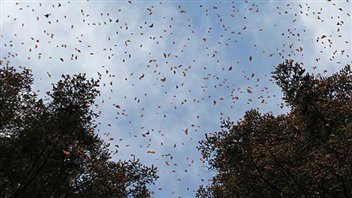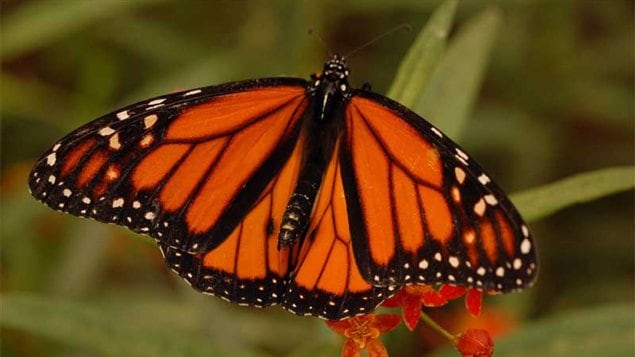A just published study says the worrisome and massive decline in the monarch butterfly is due to a lack of the milkweed plant in their breeding grounds.
The migratory insect flies from Canada and the US to Mexico in a complicated migration that spans up to five generations.
It was long thought that disturbances in their highly specific Mexican wintering grounds, and climate change, were the main causes of the decline. The Mexican government has since taken steps to protect the wintering areas.

However, a new study provides evidence there is another major factor involved in the decline. For the first time, the study maps the complex migration pattern across the continent during an entire migration event.
Ryan Norris, is a professor in Guelph’s Department of Integrative Biology. He conducted the study with lead author and current Guelph post-doc Tyler Flockhart, as well as scientists from the Commonwealth Scientific and Industrial Research Organisation (Australia).
“Likely the biggest cause of loss of milkweed is the adoption of genetically modified crops.” R Norris
The researchers used chemical markers in butterfly wings to match the differing insect generations with their birthplaces. Monarch larvae eat only milkweed before developing into butterflies. The plant’s chemical signature varies from place to place, allowing scientists to pinpoint a butterfly’s birthplace by analyzing those chemical elements in its wings
NAFTA leaders urged to create milkweed corridor
The study notes that industrial farming contributed to a 21-per-cent decline in milkweed plants between 1995 and 2013, and much of this loss occurred in the central breeding region of the US where 70 percent of the milkweed typically occurred.
The study notes that farming practices have changed as more crops are changed to genetically-modified (GM) corn crops which require use of a powerful herbicide. The crops are typically grown for use in ethanol fuel plants.
Mexican poet/environmentalist blames ethanol
Professor Norris says it’s estimated that there was a 90-per-cent decline in monarchs this past year
The David Suzuki Foundation estimates that monarch populations in Mexico plummeted to a record low of about 33.5 million this year from an annual average of about 350 million.
Mexico, the United States and Canada agreed in February to form a working group on the conservation of monarch butterflies, with discussions expected to include milkweed restoration.
This latest study is called “Unraveling the annual cycle in a migratory animal: breeding-season habitat loss drives declines of monarch butterflies” It is to be published in the Journal of Animal Ecology. An earlier report was published in 2013.







For reasons beyond our control, and for an undetermined period of time, our comment section is now closed. However, our social networks remain open to your contributions.